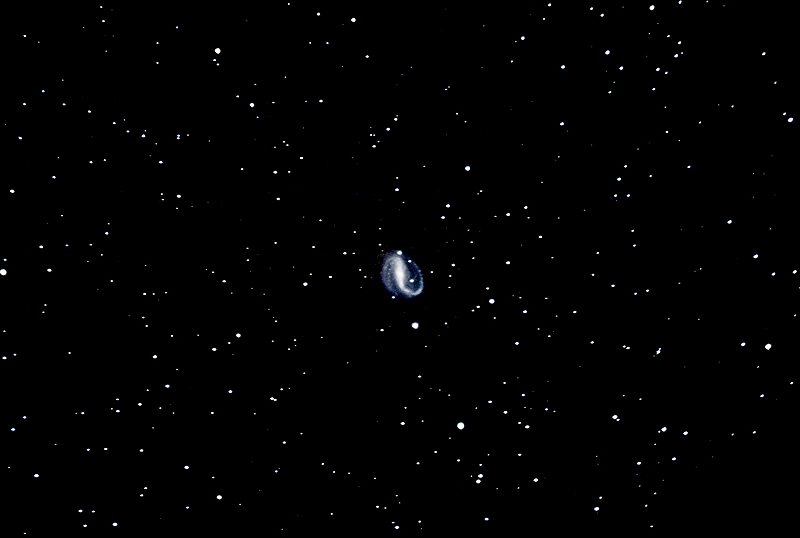Telescope Cleaning,
iPhone & DSLR imaging, Herschel 400 Catalog observing
Posted: 26 October 2022
Clouds returned on Friday, 21 October 2022. I was then away for a few days. Sunday, 23 October, there was 0.5" rain at Cassiopeia Observatory.
Tuesday morning, 25 October, I removed the Dome Cover. I then cleaned the 12" LX600 corrector plate. Due to our active pollen season it needed cleaning. I used "Doctor Clay's Cleaning Kit" that I had purchased in 2004 after confirming with Dr. Clay that the cleaning and rinse solutions would still be good after 18 years. I had last used the Kit in 2014 on my 8" LX200-ACF. I also wiped all the dust and pollen off the inside of the Aperture cover.
Before cleaning

After cleaning

|
Open: Tuesday, 25 October 2022, 1806 MST Temperature: 72°F |
Session: 1793 Conditions: Clear |
Equipment:
12" f/8 LX600 w/StarLock
2" 24mm UWA eyepiece
2" 5.5mm 100° eyepiece
1.25" 15mm eyepiece
Camera:
iPhone 13 Pro Max
D850 DSLR
1814 MST: LX600 ON, StarLock OFF, High Precision OFF.
Viewed Saturn, 102X and 443X. Then viewed Jupiter, 102X and 443X.
Attached my LiDAR Cover on the iPhone 13 Pro Max and then mounted the iPhone on the 2" 5.5mm eyepiece using the Levenhuk adapter.
Seeing was not perfect, but I did some slo-mo (240fps) videos using the Camera app, afocal 443X. These are the stacked results.


I also did some tests of a new iPhone app for an upcoming review.
I then viewed M57 (Ring Nebula), 163X.
With my LiDAR Cover on the iPhone 13 Pro Max I mounted the iPhone on the 1.25" 15mm eyepiece using the Levenhuk adapter.
1903 MST: StarLock ON.
This is a StarLock autoguided, afocal 163X image of M57 (the Ring Nebula) taken with NightCap Camera (Long Exposure, Light Boost, ISO 32000, 1sec, 1 minute, 1X lens).

I then did some tests of another new iPhone app for an upcoming review.
1927 MST: High Precision ON.
Viewed NGC7479 (galaxy), 102X.
Mounted the D850 DSLR at prime focus, focused on the star Markab, and locked the 12" mirror.
I did three StarLock autoguided, 5 minutes, ISO 1600, White Balance 4550K, exposures of NGC7479. This is a stack of all three images for an effective exposure of 15 minutes.

2000 MST: StarLock OFF.
I did some more observing of objects in the Herschel 400 Catalog, 102X: NGC6866 (open cluster), NGC6882 (open cluster), NGC6885 (open cluster), NGC6905 (planetary nebula), NGC6910 (open cluster), NGC6934 (globular cluster), NGC6939 (open cluster), NGC6940 (open cluster), and NGC6846 (galaxy).
2030 MST: LX600 OFF.
2040 MST: Took a Sky Quality reading and reported the result to Globe at Night.
|
Close: Tuesday, 25 October 2022, 2042 MST Temperature: 51°F |
Session Length: 2h 36m Conditions: Clear, SQM 20.92 |
The Tucson Sentinel published this article about Oracle: Lights out: Oracle State Park hosts star viewing party to celebrate Arizona’s dark skies.
Comments are welcome using Email. Twitter users can use the button below to tweet this report to their followers. Thanks.
Cassiopeia Observatory Home Page
Copyright ©2022 Michael L. Weasner / mweasner@mac.com. Email Etiquette.
URL = http://www.weasner.com/co/Reports/2022/10/26/index.html
